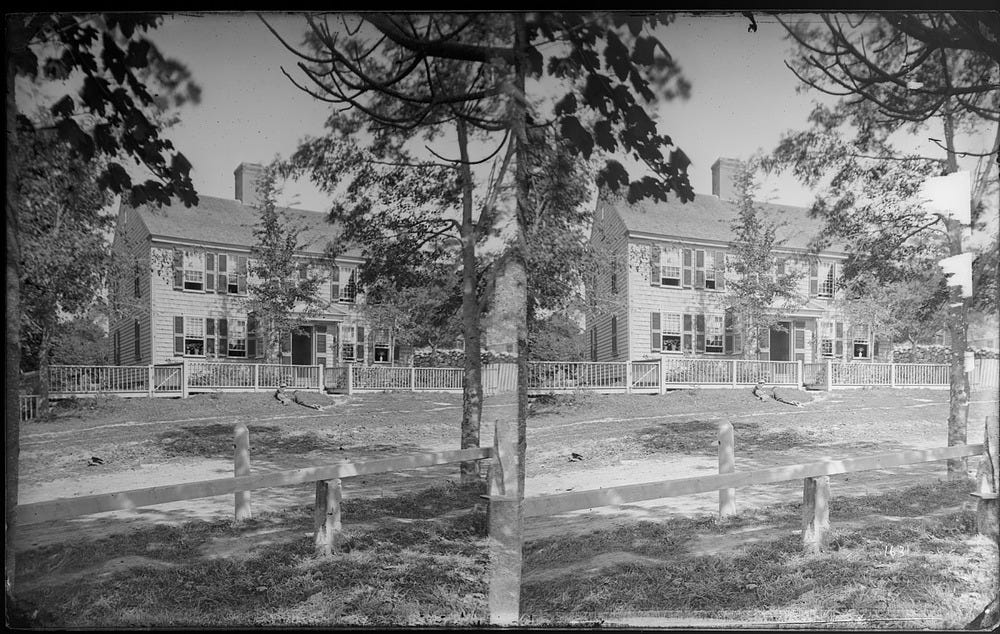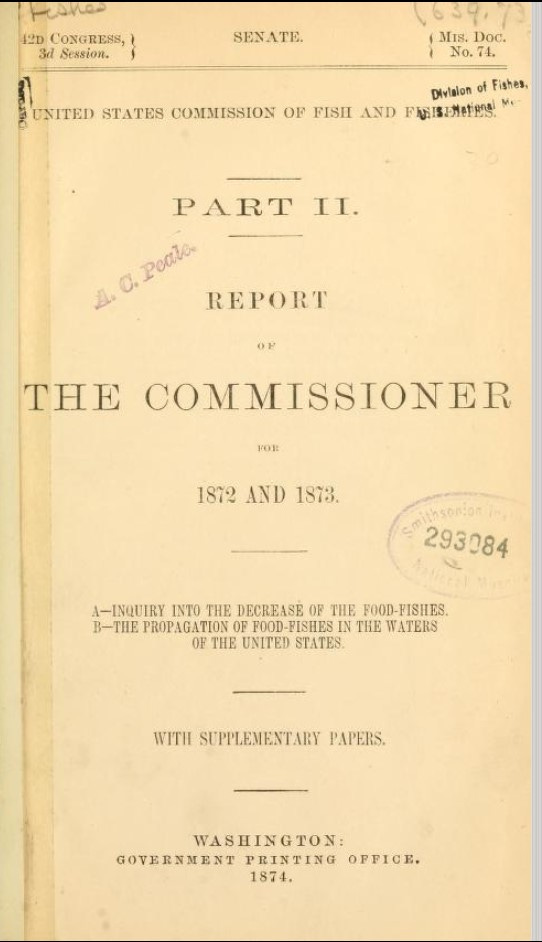Some historical figures lurk in pages of books I’ve read, but their significance never quite penetrates my regular memory – even when they played significant roles in areas I’m concerned with. Such is the case with Spencer Fullerton Baird (1823-1887).
Until this week, I might have been able to say one or two general things about him. Now, with the latest installment of The Classroom, I can say a bit more. His influential role in government science in the 19th century set down paths we’ve not wandered far from. Read on!
Short Biography
Baird grew up in Pennsylvania and became a self-taught naturalist. (He also received some casual training from notables like John James Audubon.) Precocious, Baird entered Dickinson College at 13, graduated at 17, and started teaching there by 22. He built the college’s natural history museum collection out of his personal one.
Talented but also well-connected, Baird became assistant secretary at the Smithsonian in 1850 and then the director of the National Museum. (When the Secretary died in 1878, Baird took the position.) Although most of us in 2023 think of the Smithsonian Institution mainly as a series of museums in Washington DC, in the 19th century, it was a leading national scientific institution. Baird helped make it so. He was, as historian of science A. Hunter Dupree put it in Science in the Federal Government, “an outstanding naturalist with a benign disposition.”1 Baird remained at the Smithsonian until his death in 1887.
At the Smithsonian
As a central figure in government science, Baird built important collections and cultivated professional networks. When hired at the Smithsonian, he packed up two boxcars of his own artifacts and specimens to jumpstart the museum collection. (Historian Donald Worster characterized Baird as an “insatiable collector.”) The Smithsonian inherited the 160,000 specimens collected by the Wilkes Expedition in the 1830s and 1840s, and Baird and his colleagues helped organize and manage these bits of the natural world and turn the Smithsonian into a focus of American science, what historian William Goetzmann called “a highly visible clearinghouse for American scientific endeavor.” Large parts of the credit of making the Smithsonian Institution a credible scientific enterprise goes to Baird. Baird helped to professionalize the work of science in American government. John Wesley Powell, one of the most influential men of science in 19th-century America said of Baird, that he could “walk over sands and see the diamonds.”2
Fishy Politics
At heart Baird may have been a scientist interested in how the the natural world could be cataloged and how it worked, but his position meant that he necessarily worked at the nexus of science and government. That meant practical and political problems. A central problem he addressed was declining fish.
In New England where Baird spent summers, fish populations had declined so much so that both subsistence and commercial fishing suffered. The situation seemed to call for restrictions, something state governments didn’t want to do and something the public was not accustomed to. The first step – then as now – was to study the problem. Baird navigated the politics of the day well, getting placed in charge of the US Fish Commission when it was established in 1871 to investigate causes of and remedies for the decline. The work occupied the rest of his life (though he never gave up his work at the museum).3
Ostensibly apolitical, the USFC provided no salary to Baird (hence, no political patronage to control) and included no regulatory power. As commissioner, Baird could try to persuade state regulatory bodies to enact laws or enforce regulations that might restrict the gear used to fish or limit the amount of fish caught. But there was little appetite for that. Instead, Baird and his collaborators pursued artificial propagation.
In other words, build hatcheries and make more fish.
Of course, it was (and is) more complicated than that, but this set fishery management on an important trajectory: toward technological solutions. This shift turned Baird into a promoter more than a scientist, at least some of the time. Still, he built scientific institutions, including what is now Woods Hole Oceanographic Institution, and pushed investment in government scientific work, such as outfitting the USS Albatross as perhaps the first fully dedicated marine research ship. And of course, he kept building the Smithsonian and National Museum. Reading his first report as commissioner, you can glimpse the beginnings of this program and path.
For those of us who want fish in rivers – and that’s where my initial inquiry came from – the legacy of Spencer Baird as US Fish Commissioner remains significant. He is not well enough known.
Final Words
The US Fish Commission and government scientists like Spencer Baird serve as useful figures to help understand why and how the early conservation movement arose, the topic of much of my writing. My first book contains quite a lot about fisheries (including a couple references to Baird), but I’ve not written much specialized work on fish. However, my recent Smithsonian Magazine story on the Skagit River is probably what sent me on this path, as I keep trying to think through the historical and future fate of salmon in nearby streams.
My most recent story about agriculture focuses on small-scale farms. Take a look.
As always, you can find my books, and books where some of my work is included, at my Bookshop affiliate page (where, if you order, I get a small benefit).
Taking Bearings Next Week
Next week is The Field Trip, and I recently got out locally to a landscape with some interesting history. Stay tuned!
A. Hunter Dupree, Science in the Federal Government: A History of Policies and Activities (1957; reprint, Baltimore: Johns Hopkins University Press, 1986), 85. Also see Diane Smith, Yellowstone and the Smithsonian: Centers of Wildlife Conservation (Lawrence: University Press of Kansas, 2017) for background information.
Donald Worster, A River Running West: The Life of John Wesley Powell (New York: Oxford University Press, 2002), 402; William H. Goetzmann, New Lands, New Men: America and the Second Great Age of Discovery, The Fred H. and Ella Mae Moore Texas History Reprint Series, no. 16 (Austin: Texas State Historical Association, 1995), 288; Powell quoted in Wallace Stegner, Beyond the Hundredth Meridian: John Wesley Powell and the Second Opening of the West (New York: Penguin, 1992), 124.
Besides the previously cited sources, the remainder of this is based on Arthur F. MacEvoy, The Fisherman’s Problem: Ecology and Law in the California Fisheries, 1850-1980 (New York: Cambridge University Press, 1998), esp. 100-02; and Joseph E Taylor III, Making Salmon: An Environmental History of the Northwest Fisheries Crisis (Seattle: University of Washington Press, 2001), esp. 73-79.






